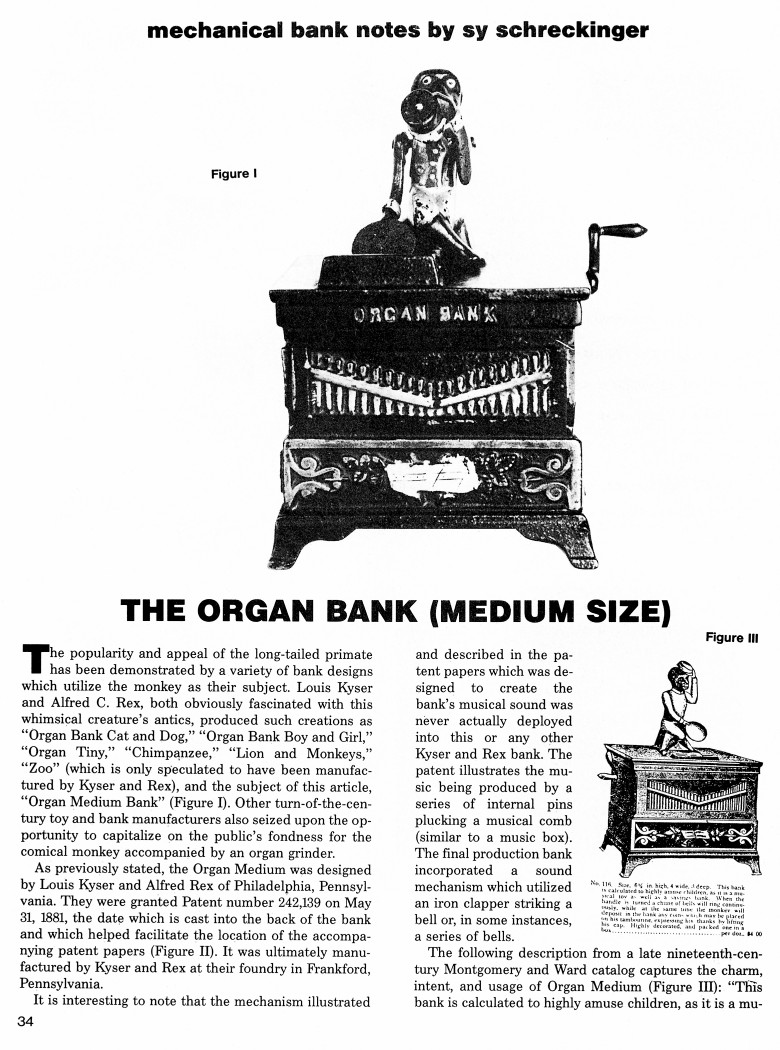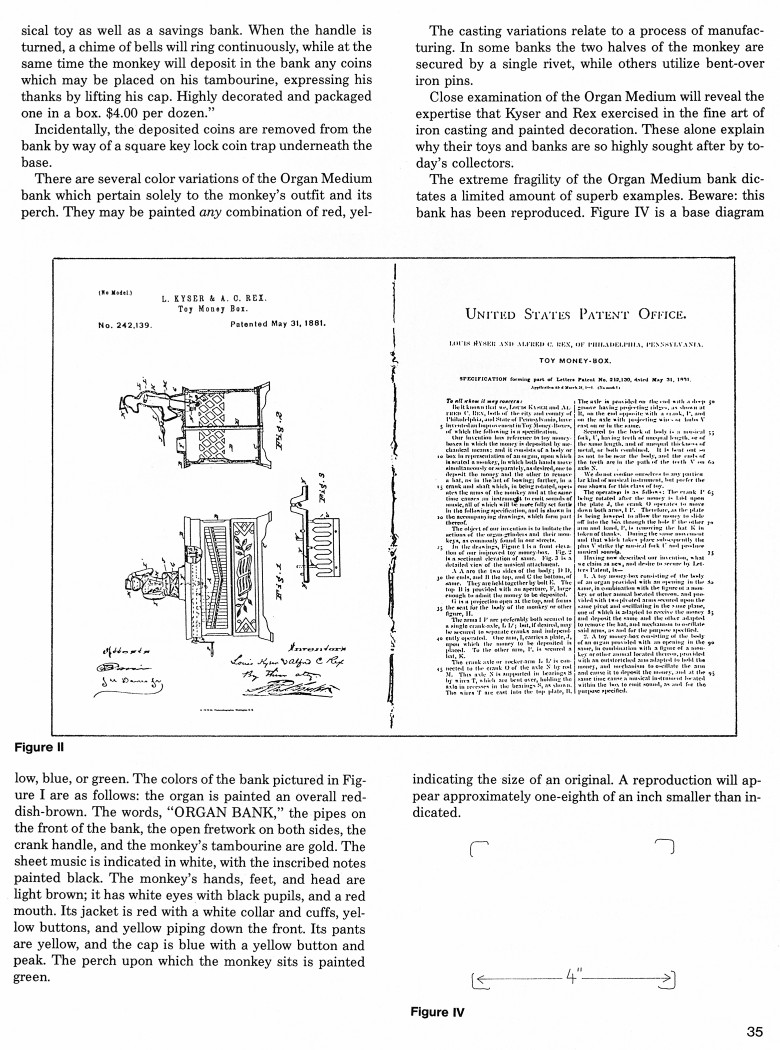|
The Organ Bank (Medium
Size)
Sy Schreckinger – ANTIQUE TOY WORLD Magazine – January, 1988
The popularity and
appeal of the long-tailed primate has been demonstrated by a variety of
bank designs which utilize the monkey as their subject. Louis Kyser and
Alfred C. Rex, both obviously fascinated with this whimsical creature's
antics, produced such creations as "Organ Bank Cat and Dog," "Organ Bank
Boy and Girl," "Organ Tiny," "Chimpanzee," "Lion and Monkeys," "Zoo"
(which is only speculated to have been manufactured by Kyser and Rex),
and the subject of this article, "Organ Medium Bank" (Figure I). Other
turn-of-the-century toy and bank manufacturers also seized upon the
opportunity to capitalize on the public's fondness for the comical monkey
accompanied by an organ grinder.
As previously stated, the Organ Medium was designed by Louis Kyser
and Alfred Rex of Philadelphia, Pennsylvania. They were granted Patent
number
242,139 on May 31, 1881, the date which is cast into the back of
the bank and which helped facilitate the location of the accompanying
patent papers (Figure II). It was ultimately manufactured by Kyser and Rex
at their foundry in Frankford, Pennsylvania.
It is interesting to note that the mechanism illustrated and
described in the patent papers which was designed to create the bank's
musical sound was never actually deployed into this or any other Kyser and
Rex bank. The patent illustrates the music being produced by a series of
internal pins plucking a musical comb (similar to a music box). The final
production bank incorporated a sound mechanism which utilized an iron
clapper striking a bell or, in some instances, a series of bells.
The following description from a late nineteenth-century Montgomery
and Ward catalog captures the charm, intent, and usage of Organ Medium
(Figure III): "This bank is calculated to highly amuse children, as it is
a musical toy as well as a savings bank. When the handle is turned, a
chime of bells will ring continuously, while at the same time the monkey
will deposit in the bank any coins which may be placed on his tambourine,
expressing his thanks by lifting his cap. Highly decorated and packaged
one in a box. $4.00 per dozen."
Incidentally, the deposited coins are removed from the
bank by way of a square key lock coin trap underneath the base.
There are several color variations of the Organ Medium bank which
pertain solely to the monkey's outfit and its perch. They may be painted
any combination of red, yellow, blue, or green. The colors of the bank
pictured in Figure I are as follows: the organ is painted an overall
reddish-brown. The words, "ORGAN BANK," the pipes on the front of the
bank, the open fretwork on both sides, the crank handle, and the monkey's
tambourine are gold. The sheet music is indicated in white, with the
inscribed notes painted black. The monkey's hands, feet, and head are
light brown; it has white eyes with black pupils, and a red mouth. Its
jacket is red with a white collar and cuffs, yellow buttons, and yellow
piping down the front. Its pants are yellow, and the cap is blue with a
yellow button and peak. The perch upon which the monkey sits is painted
green.
The casting variations relate to a process of manufacturing. In some
banks the two halves of the monkey are secured by a single rivet, while
others utilize bent-over iron pins.
Close examination of the Organ Medium will reveal the expertise that
Kyser and Rex exercised in the fine art of iron casting and painted
decoration. These alone explain why their toys and banks are so highly
sought after by today's collectors.
The extreme fragility of the Organ Medium bank dictates a limited
amount of superb examples. Beware: this bank has been reproduced. Figure
IV is a base diagram indicating the size of an original. A reproduction
will appear approximately one-eighth of an inch smaller than indicated.
|


